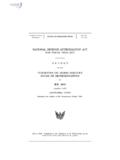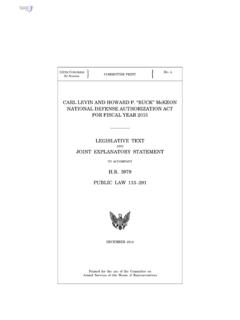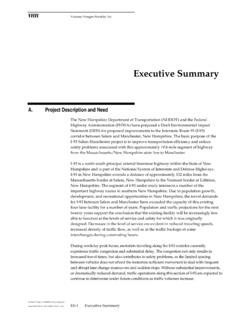Transcription of PREGNANT WOMAN S PROTECTION ACT - …
1 PREGNANT WOMAN S PROTECTION ACT Model Legislation & Policy Guide For the 2011 Legislative Year PREGNANT WOMAN s PROTECTION Act 2 Americans United for Life INTRODUCTION In 1999, Jaclyn Kurr suffered a miscarriage after being physically attacked by her boyfriend, Antonio Pena. Jaclyn was more than 16 weeks PREGNANT with quadruplets when Pena punched her stomach multiple times during an argument. Jaclyn stabbed Pena in defense of her unborn children. Pena subsequently died, and Jaclyn was charged with and found guilty of manslaughter. On appeal, the Michigan Court of Appeals held that Jaclyn, as a PREGNANT WOMAN , was justified in using force including deadly force to protect the lives of her unborn This ruling by the Michigan Court of Appeals has brought attention to an area of law that has long been neglected.
2 Applying the affirmative defense of defense of others to protect the unborn is a victory for women and children, and opens a new chapter in the fight to protect the lives of the unborn. All 50 states permit the use of force including deadly force in specified circumstances: for self defense, in the defense of others, and when a person reasonably believes that unlawful force is being used or will imminently be against him/her or a third person. In the Kurr case, the court applied the affirmative defense of defense of others to situations where a WOMAN believes that the life of her unborn child is at risk. Self-defense and defense of others are affirmative defenses raised by a criminal defendant that, if proven true, can provide a complete defense to criminal liability.
3 If force is used in defense of another, the person using the force is not required to believe that his or her own life is at risk for the defense to apply. With that in mind, it is easy to see that the application of the affirmative defense of defense of others to cases where a mother uses force to protect the life of her unborn child is a natural extension of accepted criminal jurisprudence including existing unborn victims of violence protections ( , fetal homicide laws and fetal assault laws) that recognize the unborn as a potential victim of criminal violence. The federal Unborn Victims of Violence Act (more commonly known as Laci and Conner s Law ) as well as the laws of 36 states2 recognize an unborn child as a separate victim of criminal 1 654 651, 657 (Mich.)
4 Ct. App. 2002). 2 Alabama, Alaska, Arizona, Georgia, Idaho, Illinois, Indiana, Kansas, Kentucky, Louisiana, Michigan, Minnesota, Mississippi, Missouri, Nebraska, North Dakota, Ohio, Oklahoma, Pennsylvania, South Carolina, South Dakota, Texas, Utah, West Virginia, and Wisconsin define the killing of an unborn child at any state of gestation as a form of homicide. California defines the killing of an unborn child after the embryonic stage (seven to eight weeks) as a form of homicide. Arkansas defines the killing of an unborn child after 12 weeks of gestation as a form of homicide. PREGNANT WOMAN s PROTECTION Act 3 Americans United for Life violence and treat the killing of an unborn child as a form of homicide. In addition, twenty-two states3 define non-fatal assaults on unborn children as criminal offenses.
5 Thus, it is clear that recognizing the unborn as others for purposes of the defense of others theory in no way diverges from approaches taken by the states in other areas of criminal law. In April 2009, Oklahoma became the first state to enact AUL s PREGNANT WOMAN s PROTECTION Act, explicitly expanding the affirmative defense of defense of others to include instances where a WOMAN uses force to protect her unborn child. Later, in June 2010, Missouri also adopted this groundbreaking, protective law. For more information and drafting assistance, please contact AUL s Legislative Coordinator (202) 741 - 4907 or DENISE M. BURKE, ESQ. Vice President of Legal Affairs Americans United for Life Florida, Nevada, Rhode Island, and Washington define the killing of an unborn child after quickening (discernible movement in the womb) as a form of homicide.
6 Maryland, Massachusetts, and Tennessee defined the killing of an unborn child after viability as a form of homicide. New York defines the killing of an unborn child after 24 weeks gestation as a form of homicide. 3 Alabama, Alaska, Arizona, Arkansas, Georgia, Idaho, Illinois, Indiana, Louisiana, Michigan, Minnesota, Mississippi, Nebraska, North Dakota, Ohio, Oklahoma, Pennsylvania, South Carolina, South Dakota, Texas, West Virginia, and Wisconsin. PREGNANT WOMAN s PROTECTION Act 4 Americans United for Life PREGNANT WOMAN S PROTECTION ACT [Drafter s Note: This model provides general guidance and should be specifically tailored to the requirements of each state s criminal code. Please contact AUL for specific drafting assistance.] HOUSE/SENATE BILL No. _____ By Representatives/Senators _____ Section 1.
7 Title. This Act may be known and cited as the PREGNANT WOMAN s PROTECTION Act. Section 2. Legislative Findings and Purposes. (a) The [Legislature] of the State of [Insert name of State] finds that: (1) Violence and abuse are often higher during pregnancy than during any other period in a WOMAN s lifetime; (2) Women are more likely to suffer increased abuse as a result of unintended pregnancies; (3) Younger women are at a higher risk for pregnancy-associated homicide; (4) A PREGNANT WOMAN is more likely to be a victim of homicide than to die of any other cause; (5) Homicide and other violent crimes are the leading cause of death for women of reproductive age; (6) Husbands, ex-husbands, or boyfriends are often the perpetrators of pregnancy-associated homicide or violence.
8 (7) Moreover, when husbands, ex-husbands, or boyfriends are involved, the violence is often directed at the unborn child or intended to end or jeopardize the pregnancy; and PREGNANT WOMAN s PROTECTION Act 5 Americans United for Life (8) Violence against a PREGNANT WOMAN puts the life and bodily integrity of both the PREGNANT WOMAN and the unborn child at risk. (b) By adopting this Act, the [Legislature] intends to: (1) Ensure that the affirmative right of a PREGNANT WOMAN to carry her child to term is protected; (2) Ensure that affirmative defenses to criminal liability provided for under [Insert name of State] s criminal code at Section(s) [Insert citation(s) to appropriate criminal code section(s)] explicitly provide for a PREGNANT WOMAN s right to use force including deadly force to protect her unborn child; and (3) Supplement, but not supersede, the applicability of any other affirmative defenses to criminal liability provided for under [Insert name of State] s criminal code.
9 Section 3. Definitions. As used in this Act only: (a) Another means a person other than the PREGNANT WOMAN . (b) Deadly force means [Insert specific language from and citation(s) to appropriate state criminal code section(s)] (or force which, under the circumstances in which it is used, is readily capable of causing death or serious physical harm ). (c) Force means [Insert specific language from and citation(s) to appropriate state criminal code section(s)] (or violence, compulsion, or constraint exerted upon or against another ). (d) Embryo means an individual organism of species homo sapiens from the single cell stage to eight (8) weeks development. (e) PREGNANT means the female reproductive condition of having an unborn child in the WOMAN s body.
10 (f) Unborn child means the offspring of human beings from conception until birth. (g) Unlawful force means [Insert specific language from and citation(s) to appropriate state criminal code section(s)] (or force which is employed without the consent of the PREGNANT PREGNANT WOMAN s PROTECTION Act 6 Americans United for Life WOMAN and which constitutes an offense under the criminal laws of this State or an actionable tort ). Section 4. Affirmative Defense to Criminal Liability. A PREGNANT WOMAN is justified in using force or deadly force against another to protect her unborn child if: (a) Under the circumstances as the PREGNANT WOMAN reasonably believes them to be, she would be justified under Section(s) [Insert citation(s) to state criminal code section(s) on self-defense and use of deadly force] in using force or deadly force to protect herself against the unlawful force or unlawful deadly force she reasonably believes to be threatening her unborn child; and (b) She reasonably believes that her intervention and use of force or deadly force are immediately necessary to protect her unborn child.




